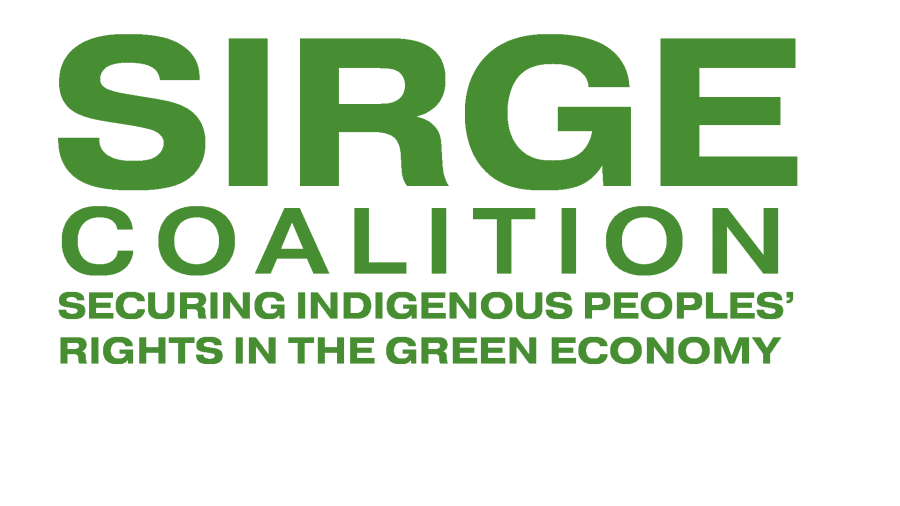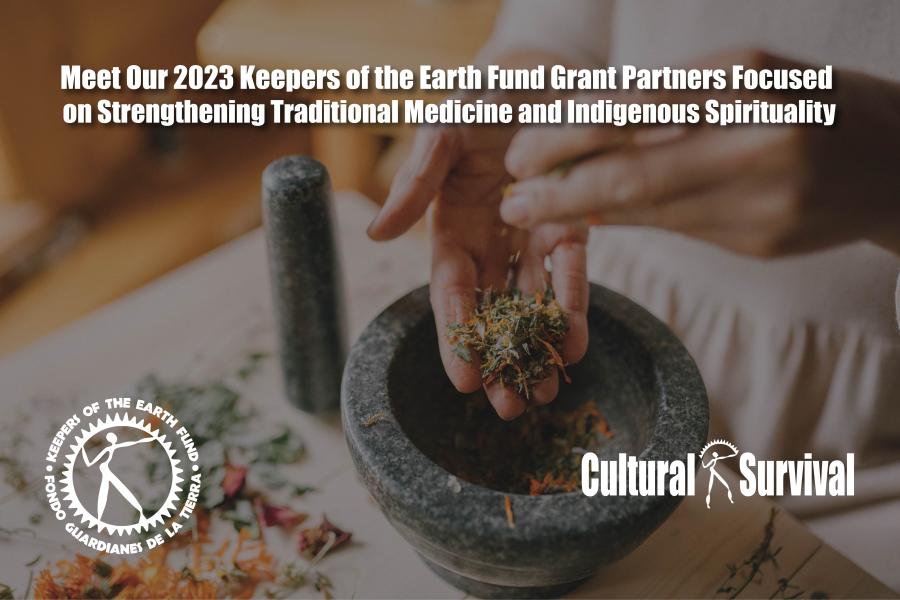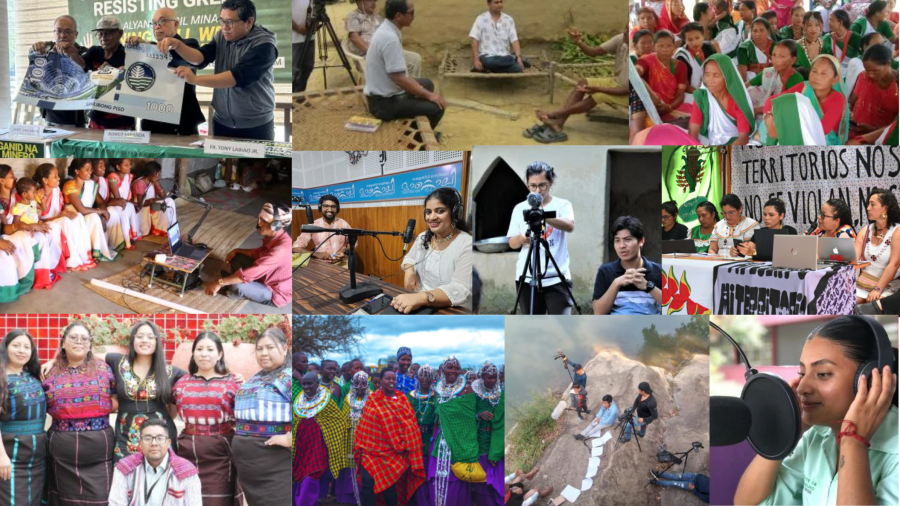
December 17, 2019, was the official close of the United Nations’ International Year of Indigenous Languages, which aims to draw attention to language loss and the need to strengthen and revitalize them.
Although Indigenous Peoples make up more than 6 percent of the world's population, they speak more than 4,000 of the world's 7,000 languages. UNESCO predicts that between 50-90 percent of Indigenous languages (~3,000 languages) will disappear by the end of this century if action is not taken. Language loss also carries with it the loss of environmental, technological, social, economic and cultural knowledge. Investment in language programs is needed now to create new language speakers in younger generations!
On December 18, 2019, the UN General Assembly adopted the resolution entitled "Rights of Indigenous Peoples." The resolution, among other issues, includes the proclamation of 2022-2032 as the International Decade of Indigenous Languages.
We wanted to share some of the initiatives Cultural Survival has supported over the past year focusing on language revitalization.
1. Supporting Indigenous Language Projects through Keepers of the Earth Fund.
In 2019, the Keepers of the Earth Fund awarded 20 projects in 10 countries supporting the right to development and self-determination. In light of the IYIL, we gave special priority to projects focused on community development through Indigenous language revitalization. 6 projects in 2019 worked towards revitalizing Indigenous languages:

Instituto Superior Pedagógico “Quilloac” Bilingüe Intercultural - Kichwa (Ecuador)
Strengthening the ancestral language Kichwa Kañari through technology
In the province of Cañar, the Kichwa Kañari Peoples are working to stop the decline of the Kichwa language. Members of Instituto Bilingüe Quilloac developed a mobile phone app to stimulate interest and teach Kichwa Kañari to three hundred children.
Association for the Survival of the Nyindu Indigenous People’s Cultural Heritage (ASHPAN) - Banyindu (Democratic Republic of Congo)
Developing Kinyindu phrasal and idioms dictionary
The Batwa Nyindu of the Mwenga territory in South Kivu fear that dominant languages are steadily phasing out Kinyindu, and with it the Nyindu identity. ASHPAN created a pioneer phrasal and idioms dictionary in Kinyindu, as well as a calendar to demonstrate the Kinyindu system of time telling. Use of the dictionary has sparked interest in Nyindu culture, promoting cultural revitalization and inclusion. They are partnering with local radio to promote ASHPAN’s mission and Nyindu culture throughout the region.
United Youths Organization (UYO) - Wimbum (Cameroon)
Limbum language literacy among hearing and speech impaired persons in Ndu municipality
The Wimbum Peoples in Ndu municipality seek to transcribe their Limbum language into sign language to provide hearing and speech impaired persons with an accessible form of communication and a manner to express Wimbum cultural values. UYO transcribes Limbum grammar, folktales, proverbs and other language components into sign language and trained ten teachers in Limbum signing.
South Rupununi District Council (SRDC) - Wapichan (Guyana)
Documenting Wapichan stories and traditional knowledge
The Youth Arm of SRDC launched a Wapichan Story Collection Project to bridge the generational gap between elders and youth in the 21 Wapichan villages of the South Rupununi. The SRDC produced books that showcase traditional Wapichan stories, traditional knowledge of their environment, and document Wapichan language and culture. The books are being used in community schools, and serve as evidence of the history of land use by the Wapichan people in a land titling process between the Wapichan Peoples and the Guyana government.
Resguardo Inga San Miguel de la Castellana - Inga (Colombia)
Strengthening the Inga language among the children and youth of Resguardo San Miguel de la Castellana
The parents, grandparents, and elders of the Inga community fear that their ancestral language, which is integral to Inga cultural and spiritual identity, faces gradual decline within the younger generation. The Inga held a series of community gatherings which taught seventy Inga children and youth the maternal Inga language, its linguistic and cultural components. They are also producing didactic materials for future language instruction with the support of an Inga linguist.
Wôpanâak Language Reclamation Project - Assonet Band, Aquinnah, Herring Pond, and Mashpee (United States)
Constructing Wôpanâôt8âôk Weety8 (The Wampanoag Language House)
The Wôpanâak Language Reclamation Project constructed a yurt that houses the Wôpanâôt8âôk Weety8 (The Wampanoag Language House) so that Wampanoag children can learn in an environment that immerses them in the Wôpanâak language. The Language House educates students in grades 1- 4 and has allowed them to expand their student population to 35. It serves as a center for community meetings, ceremonial gatherings, language immersion camps, after school programming, and adult classes.
2. Supporting Indigenous Language Radio Programming at Community Radio Stations

Bush FM Radio. South Africa. (Khoi Nation)
In 2019, our Community Media Grants Project funded 35 Indigenous media projects in 9 countries, totaling $210,000, strengthening Indigenous languages and promoting freedom of expression.
We also supported 6 groups of Indigenous Community Media Youth Fellows who worked to strengthen their Miskitu, Wayuu, Kichwa, Maya Mam, Ixíl, and Kankuamo languages.
3. Raising Awareness about Indigenous Languages and International Year of Indigenous Languages through Indigenous Rights Radio

Cultural Survival's Indigenous radio producers bring you the latest information on Indigenous Peoples' rights and how they are being implemented around the world.
Listen to our series on Indigenous languages in English and Spanish.
Check out our series on the Sustainable Development Goals in Ayuuk, K´iche´, Afrikaans, and Sunuwar.
4. Highlighting Indigenous Language Revitalization Efforts in the Cultural Survival Quarterly

The March 2019 issue of the Cultural Survival Quarterly magazine was dedicated to Indigenous Languages. Throughout the world, Indigenous Peoples are working vigorously to reclaim and revitalize their languages, which are essential in maintaining their cultures. Indigenous languages intrinsically carry unique systems of knowledge and ways of knowing and understanding our relationships, responsibilities, and place in the world; languages are sacred living expressions of creative thought and power. In this issue of the CSQ, we highlight the incredible work of a few of the many Indigenous language activists who have dedicated their lives to revitalizing their mother tongues.
Top photo: Colectivo Ko'one'mix Tuklik Múul Kuxtal [KTMK]. Yucatán México. (Maya Nation).



